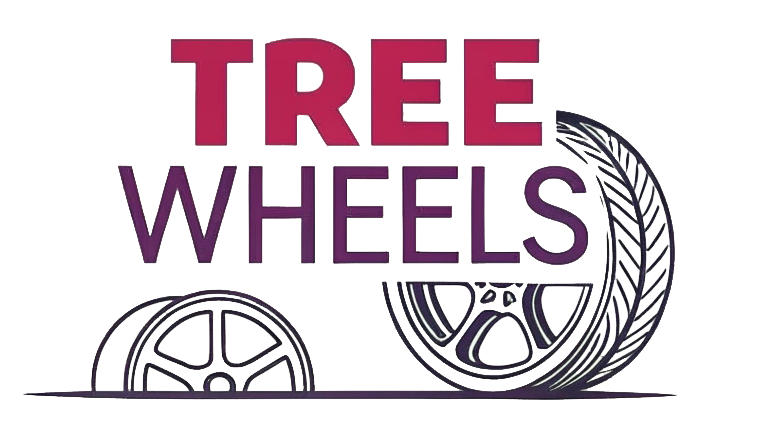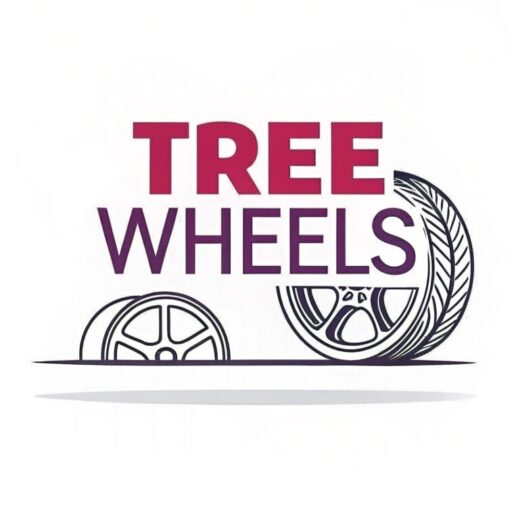I see this question a lot in my shop. Many Ford owners eye those sleek Toyota wheels, hoping for an easy swap to refresh their ride's look. But incorrect wheel fitment can lead to dangerous driving conditions and expensive damage.
Toyota wheels can fit certain Ford models if they share the same lug pattern, center bore, offset, and load rating. The most common shared patterns are 5x114.3mm for cars and 6x139.7mm for trucks and SUVs, but additional measurements must match for safe installation.

Before spending money on wheels that might not fit, let's dive into what really determines wheel compatibility. I've seen too many customers waste hundreds on mismatched wheels. The right information will save you time, money, and keep you safe on the road.
What Lug Pattern Does Toyota Use?
I've noticed many customers assume all Toyota wheels use the same bolt pattern. This mistake has led to frustrated returns and wasted weekends for DIY enthusiasts.
Toyota uses several lug patterns depending on the vehicle model. Most Toyota cars and smaller SUVs use a 5x114.3mm (5x4.5") pattern, while trucks and larger SUVs typically use a 6x139.7mm (6x5.5") pattern. Older models might use 5x100mm, and some European-market Toyotas use 5x120mm.
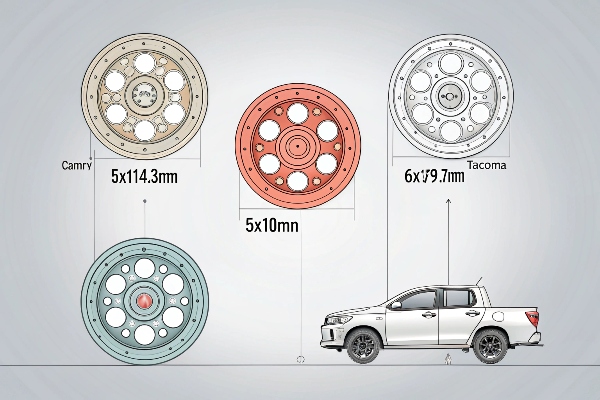
Toyota's wheel specifications vary significantly across their lineup, making compatibility more complex than just matching bolt patterns. The 5x114.3mm pattern appears on many popular models like the Camry, RAV4, and Highlander, making these wheels potentially compatible with Ford Fusion, Edge, and older Explorer models that share this pattern.
For trucks, the 6x139.7mm pattern on Tacoma, Tundra, and 4Runner models matches newer Ford Ranger and F-150 models. However, even with matching patterns, other critical measurements must align. The center bore on most Toyota wheels (typically 60.1mm or 106.1mm for trucks) differs from Ford's specifications (usually 63.4mm to 70.5mm). This creates a centering issue that might require hub-centric rings for proper fitment.
Additionally, Toyota's wheel offset typically ranges from +30mm to +45mm, which may not match Ford's requirements. Using wheels with incorrect offset can affect steering, suspension wear, and braking performance. Always check your specific model's requirements before purchasing wheels from another manufacturer.
Will Toyota Rims Fit on a Ford Ranger?
I had a customer bring his 2020 Ranger in last month, excited about scoring "perfect" Toyota Tacoma wheels from a junkyard. Unfortunately, he hadn't checked all the specs, leading to fitment issues we had to solve.
Toyota Tacoma wheels can fit newer Ford Rangers (2019+) as both use the 6x139.7mm bolt pattern. However, you'll need hub-centric rings to adapt Toyota's 106.1mm center bore to Ford's 93.1mm specification. The offset and width must also be compatible to avoid rubbing or handling issues.
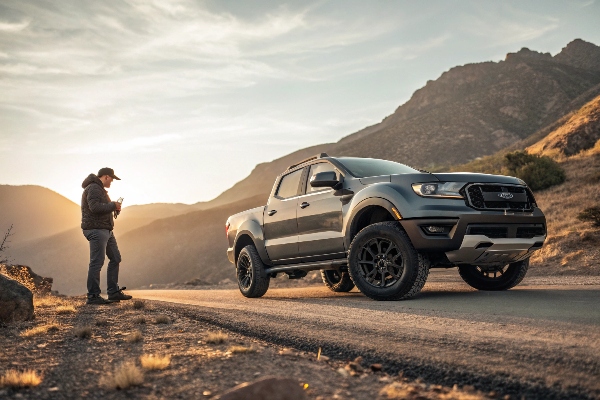
The compatibility between Toyota rims and Ford Rangers depends heavily on the generation of your Ranger. Post-2019 Rangers share the same 6x139.7mm bolt pattern with Toyota trucks, opening possibilities for wheel swaps, but earlier Rangers used different specifications altogether.
Beyond the bolt pattern match for newer Rangers, several factors require attention. The Tacoma's wheels typically have a center bore of 106.1mm, significantly larger than the Ranger's 93.1mm bore. This mismatch means the wheels won't center properly on the hubs without hub-centric rings, potentially causing vibration and uneven tire wear. These adapter rings are relatively inexpensive but absolutely necessary for a safe installation.
Offset differences also present challenges. Toyota Tacoma wheels usually have offsets between +30mm to +35mm, while Rangers typically use wheels with +44mm to +55mm offset. This difference affects wheel positioning relative to the suspension components and fenders. Using wheels with too little offset can cause the wheels to stick out beyond the fenders (potentially illegal in some jurisdictions), while too much offset might cause clearance issues with brake components or suspension arms.
Weight ratings represent another crucial consideration. Toyota Tundra wheels might be rated for heavier loads than what's appropriate for a Ranger, while Tacoma wheels usually align better with Ranger specifications.
Is the Toyota 5 Stud the Same as the Ford?
I recently helped a Ford Focus owner who was convinced all 5-lug wheels would fit his car. The differences I had to explain showed how these seemingly similar patterns can vary significantly.
Toyota and Ford both use 5-lug wheel patterns, but they're not always the same. Many Toyota cars use a 5x114.3mm pattern that matches certain Ford models, but Toyota also uses 5x100mm and 5x150mm patterns. The exact measurements must match, as even 1mm difference in bolt circle diameter prevents proper fitment.

The 5-lug wheel configuration appears across both Toyota and Ford vehicles, but substantial variations exist within this broad category. The most common shared pattern is 5x114.3mm (also called 5x4.5 inches), found on many Toyota models like the Camry, Avalon, and RAV4, as well as Ford models including the Fusion, some Focus variants, and older Mustangs.
Despite this seeming compatibility, several other measurements determine whether wheels will actually fit properly. The center bore diameter particularly matters – Toyota typically uses smaller center bores (around 60.1-70.5mm) compared to Ford's often larger measurements (63.4-70.5mm). If a Ford wheel is mounted on a Toyota, the wheel might not center properly due to the larger bore. Conversely, attempting to mount Toyota wheels on a Ford might require hub-centric rings to fill the gap.
Thread pitch and seat type represent another critical difference. Most Toyota vehicles use 12x1.5mm lug nuts with a conical seat, while some Ford models use 14x1.5mm with different seat types. Using incorrect lug nuts can damage both the wheels and studs, potentially creating dangerous driving conditions.
Even within the 5x114.3mm pattern, slight manufacturing variations between brands can sometimes create fitment issues. Premium wheels typically maintain tighter tolerances, but budget options might have enough variance to cause problems. I've seen cases where wheels technically shared the same pattern but couldn't be properly mounted due to these subtle differences.
What is the Lug Pattern for Ford?
I've had numerous customers ask for "Ford wheels" without realizing Ford uses multiple patterns across their lineup. This misunderstanding has led to many disappointed customers returning with incompatible purchases.
Ford uses several lug patterns across its vehicle lineup. Common patterns include 5x114.3mm (Focus, Fusion, older Mustang), 5x108mm (newer Focus, Escape), 5x127mm (Explorer), and 6x139.7mm (Ranger, F-150). The pattern varies by model, year, and sometimes trim level.
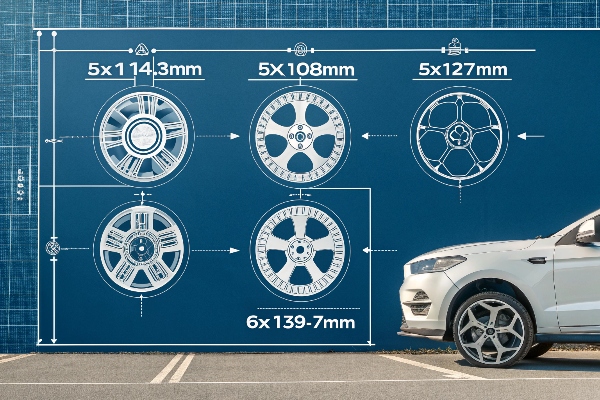
Ford's extensive vehicle lineup necessitates multiple lug patterns to accommodate different vehicle weights, performance requirements, and design considerations. This diversity creates both opportunities and challenges when considering wheel swaps between Ford and Toyota vehicles.
The 5x114.3mm pattern represents a common crossover point, appearing on Ford's midsize vehicles and many Toyota cars and crossovers. This shared specification makes certain wheel swaps possible between brands, though other measurements must still align. For example, a Toyota Camry wheel might physically bolt onto a Ford Fusion, but differences in offset could affect handling characteristics and tire clearance.
For truck owners, the 6x139.7mm pattern creates potential compatibility between newer Rangers and F-150s and Toyota's truck lineup including the Tacoma, Tundra, and 4Runner. However, Ford's trucks typically use wheels with different offsets and load ratings than Toyota's offerings, potentially affecting performance and safety.
Ford's European-influenced vehicles like the newer Focus, Fiesta, and some Escape models use the 5x108mm pattern, which doesn't match any Toyota patterns. This metric pattern (sometimes called 5x4.25") is shared with Volvo and some other European manufacturers but creates an incompatibility with Toyota wheels.
The 5x127mm (5x5") pattern on larger Ford SUVs like the Explorer and Edge also doesn't match Toyota's lineup, eliminating crossover potential. Additionally, heavy-duty Ford trucks use 8-lug patterns that have no Toyota equivalents, as Toyota doesn't produce comparable heavy-duty vehicles in North America.
Conclusion
While Toyota and Ford wheels can sometimes be interchangeable when they share bolt patterns, proper fitment requires matching center bore, offset, and load ratings. Always verify all specifications and consider using hub-centric rings when necessary. When in doubt, consult a professional wheel specialist to ensure safety.
